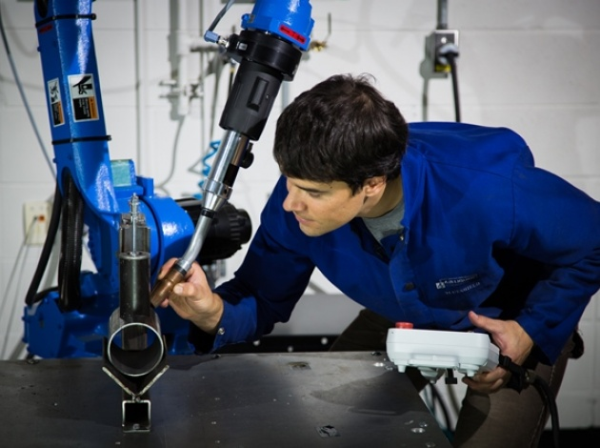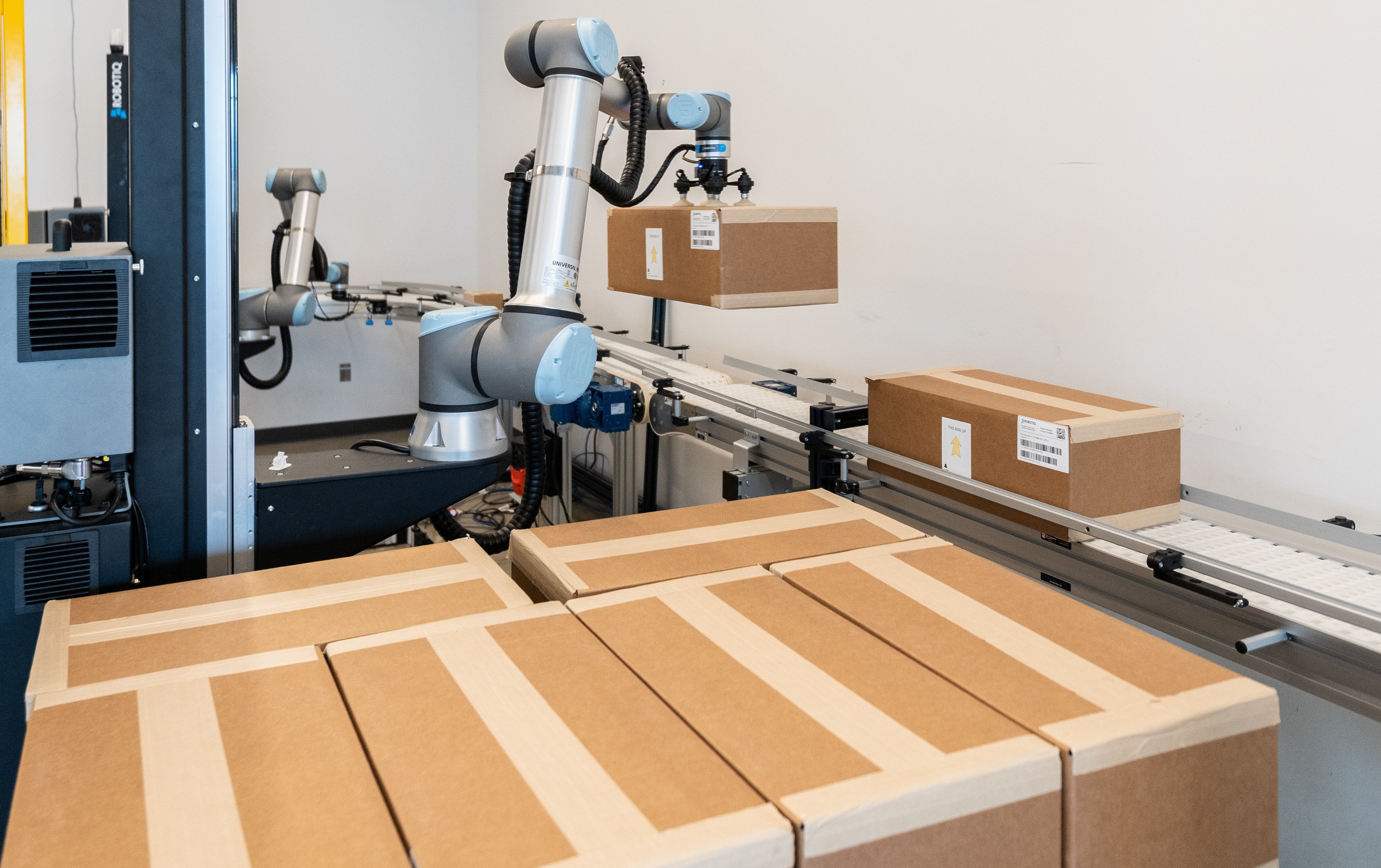Collaborative Robots for Welding?

Posted on Sep 05, 2014 2:05 AM. 2 min read time
There has been a lot of hype around collaborative robots over the last few years. More companies have come out with their version of collaborative or lightweight robots. The principal advantage of these robots is to be able to work alongside human workers. They don't need to use heavy duty fences and enormous security systems to safeguard people. The speed of motion and shape of a collaborative robot are designed to reduce or eliminate the impact that can occur if contact is made with its co-workers. Yet at the moment most of the applications for collaborative robots are still in material handling and basics tasks on the assembly chain. Can welding be done by a collaborative robot?
Welding is a path intensive application, so leading the robot through the path can be a big time saver. The reduction in programming time could allow the robot to be used on smaller batches, improving the return on investment for the robotic welding robot.
See in the video below how people are looking to use Universal Robots for welding tasks.
The UR intuitive programming interface is very compelling for anyone who has experienced what it is like to program welding robots. But is the UR robot up to the welding job? Here are a few issues you might want to consider:
Reliability in welding environment
Universal Robots are reliable machines, but they are not made for the hot, dusty, electrically noisy environment which is welding. In the long term, I have serious doubts about how the UR will endure in the welding environment, as they are not specifically designed for this environment.
Precision hands-on teaching
In welding, the torch needs to be positioned at a precision of about half of the welding wire diameter. With the current hands-on teaching method of the UR, this is very hard to achieve.
Integration with welding sources
The UR will simplify the path programming, but will make the programming of the welding parameters more complex, since it does not yet have any specific interface with the major source suppliers.
Reach
A large number of parts to be welded are longer than the UR reach.
Kinetiq Teaching : The Best of Both Worlds

Kinetiq Teaching is an add-on to industrial welding robots. It gives the industrial welding robot the hands-on teaching features of the collaborative robots, through a simple icon-based programming interface. On the other hand, it uses the built-in welding features of proven platforms such as Yaskawa Motoman.
If you want to learn how easy it is to use Kinetiq Teaching, you can watch our how-to series:








Leave a comment